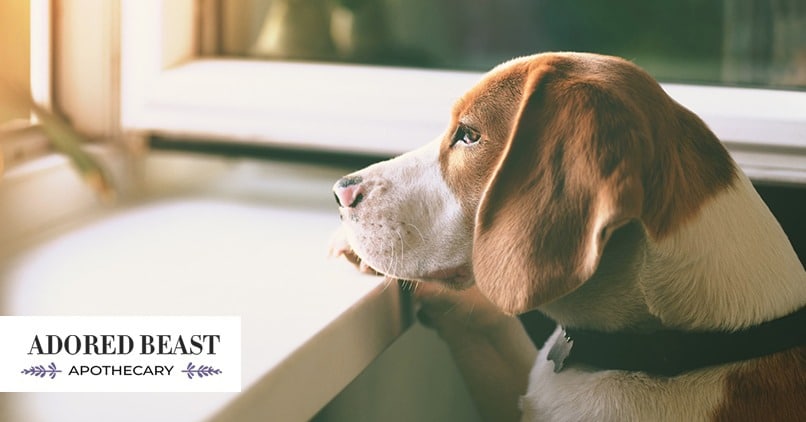Separation anxiety in dogs is a clinical panic disorder. Unlike teaching a dog to lay down or stay, fixing separation anxiety is a longer process that involves changing your dog’s emotional response to being alone or apart from you.
We turned to canine separation anxiety expert Malena DeMartini for her advice on how we can all help bring our anxious pups some much needed relief. Malena is renowned in the dog training world for her work on separation anxiety disorder, and her book, Treating Separation Anxiety in Dogs, has helped countless dogs and their owners.
Separation Anxiety in Dogs
Working on your dog’s separation anxiety can be done, with time, patience, and some commitment. Follow these steps to move in a positive direction.
1. Recognize the Why
There are many reasons dogs develop separation anxiety:
- Genetics
- Adverse experiences
- Getting older
- Pain or noise phobia
- No other known reasons (yes, so helpful we know)
2. Create a Contract
Suspend absences. Make a commitment to only leave your dog for as long as he can comfortably handle, which may not be at all!
3. Use Technology
Use a webcam to monitor your dog’s body language to ensure he remains under threshold (not stressed). Observe and keep a training log.
4. Set the Scene
Comfy confinement? Many dogs with separation anxiety feel better when they’re not confined to a crate. If this is the case, consider if your pup is ready to be left alone out of the crate. Also, use food toys for enrichment, not as a training solution.
5. Recognize & Eliminate Triggers
Keys, bag, shoes, blinds… do certain things alert your dog to your imminent departure and trigger the separation anxiety? Help your dog feel better about your getting ready routine as you go through your training, but don’t front load these in your protocol.
6. Medications?
Sometimes, natural remedies or medications can help provide relief and set the science for effective learning. Speak with your vet about options or ask about a referral for a veterinary behaviroist.
7. Desensitize
Work slow and gradual. Vary the duration of the time alone, and work on trying to desensitize the discomfort that comes from the various triggers. Don’t try to move to fast – work at a level your dog can easily manage.
Live with Julie
We were lucky enough to sit down and chat with Malena recently to discuss separation anxiety at length. It was such an interesting, enlightening conversation, one we know everyone can benefit from!
Malena & Julie covered:
- What is separation anxiety?
- How does separation anxiety happen?
- What can we do to prevent separation anxiety?
- How can we help our animals become less anxious when we leave?
- Tips & Tricks for dealing with separation anxiety.












